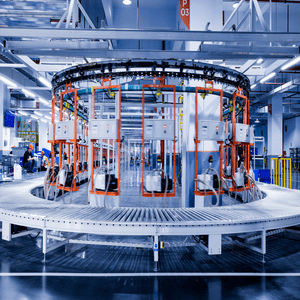Semiconductor Manufacturing Energy Audit
Comprehensive Level 2 energy audit for a modern manufacturing facility producing semiconductor products and protective solutions. The assessment covered HVAC systems, compressed air networks, water treatment, nitrogen generation, and lighting, with a focus on identifying efficiency improvements, reducing operational energy use, and maintaining production quality in a controlled environment.
Detailed Assessment
- Review of AHUs, MAUs, chiller plants, and associated controls.
- Evaluation of compressed air systems and vacuum pumps for optimization and leak prevention.
- Assessment of water treatment plant processes for reduced energy waste.
- Analysis of nitrogen generator performance for efficiency improvements.
- Facility-wide lighting evaluation for modernization opportunities.
Performance Evaluation
- Adjustment of compressed air pressure setpoints to reduce excess load.
- Optimization of ventilation and cooling systems, including damper control and cooling tower maintenance.
- Comprehensive BMS integration for chillers, AHUs, MAUs, and exhaust fans.
- Replacement of static balancing valves with dynamic types.
- Installation of VSDs on fixed-speed exhaust fans.
- Process pump cascade control optimization.
- Progressive replacement of motors with ultra-high efficiency IE5 models.
- Targeted insulation replacement in cooling systems.
Diagnostic Testing
- Testing of BMS control sequences and process-linked ventilation operation.
- Verification of temperature, airflow, and pressure stability post-optimization.
- Leak detection and performance measurement for compressed air systems.
Maintenance Review
- Updated maintenance protocols for chillers, ventilation equipment, pumps, and compressors.
- Training for operators on BMS functionality and optimized control strategies.
- Scheduled performance reviews to ensure ongoing efficiency gains.
System Optimization
- Centralized BMS coordination for real-time control and monitoring.
- Setpoint management for energy savings without compromising environmental stability.
- Integration of ventilation and process controls to reduce unnecessary energy use.
Efficiency Improvement
- Estimated Annual Energy Savings: 843 MWh.
- CO₂ Emissions Reduction: 541 tonnes/year.
Result: A high-impact optimization program delivering measurable reductions in energy use and carbon emissions, while enhancing operational control and reliability across critical cooling, ventilation, and compressed air systems.

